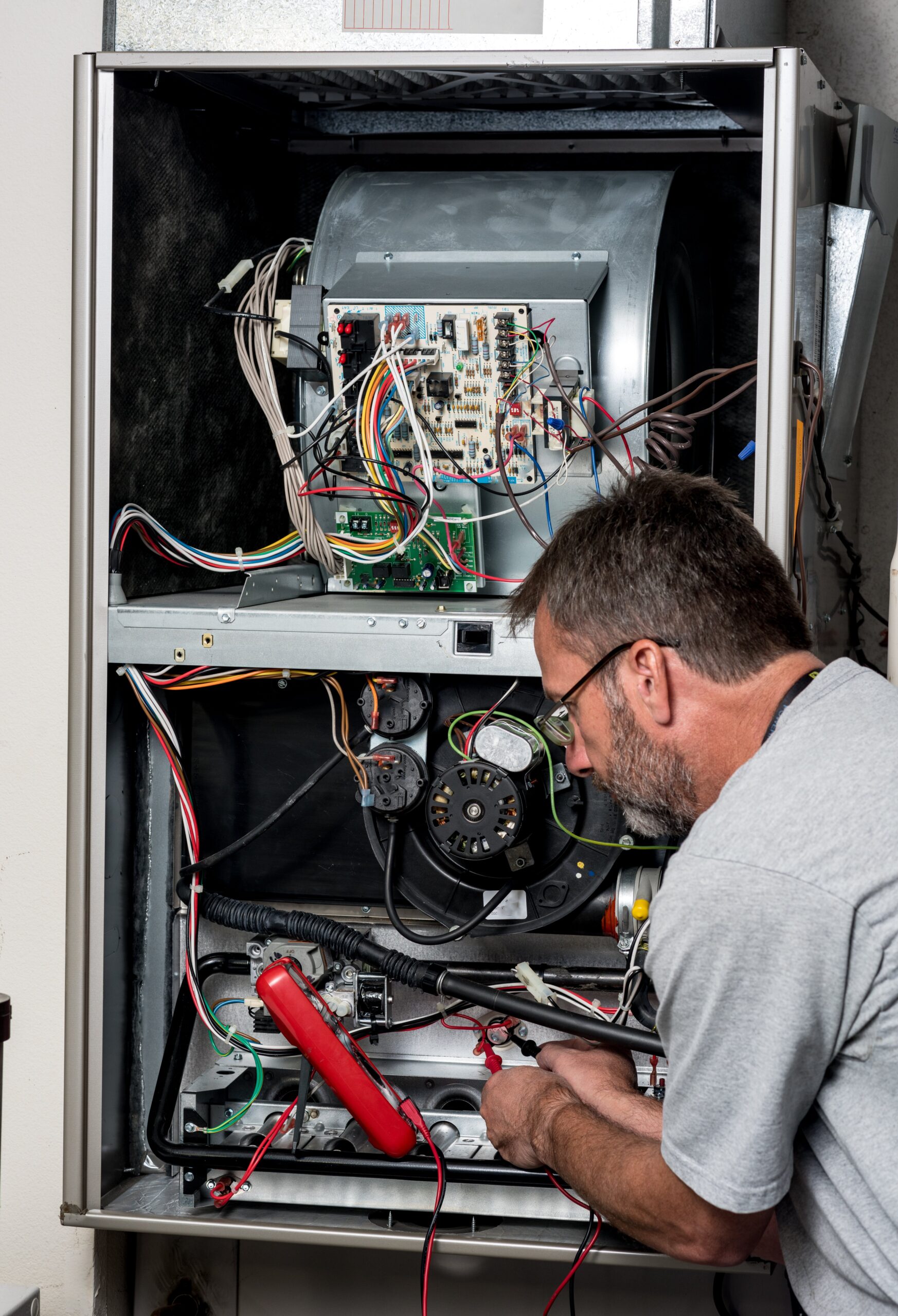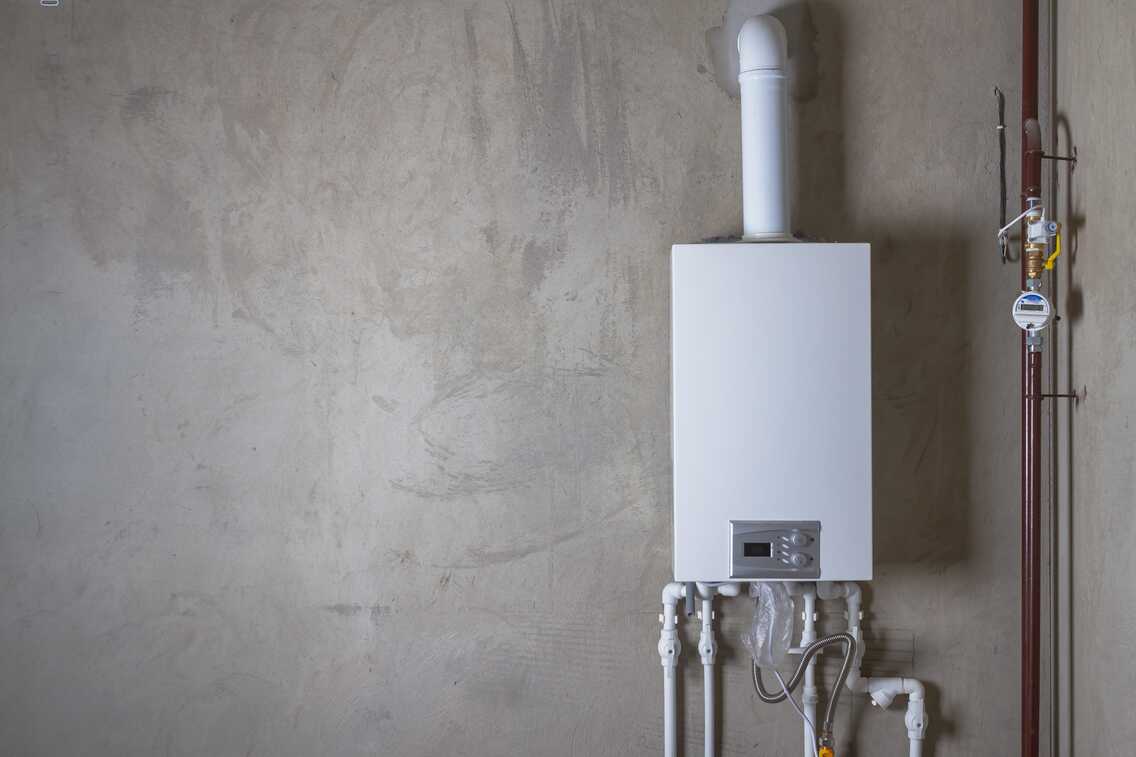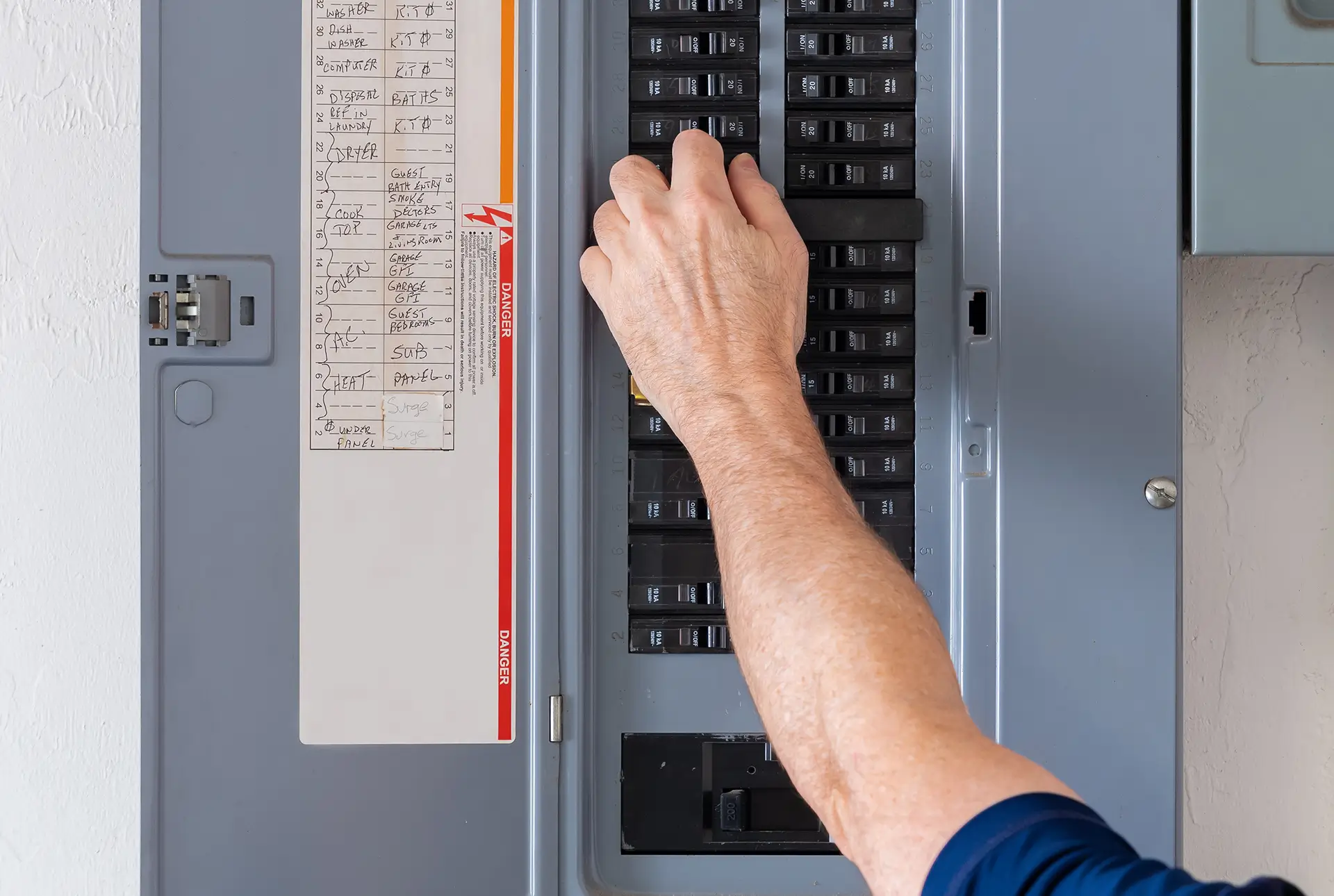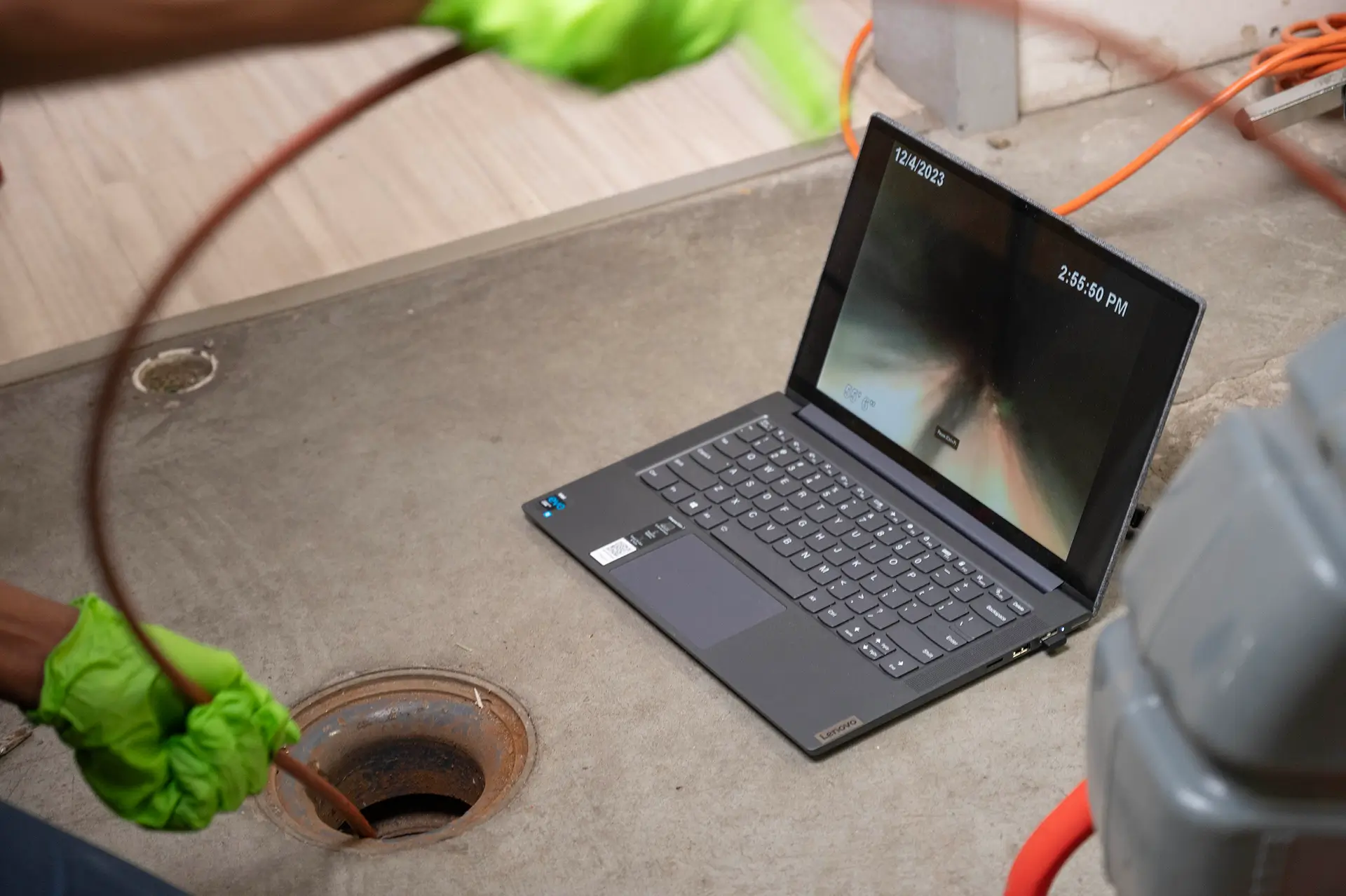What Causes Furnace Short Cycling?

Is your furnace playing stop-and-start games in the middle of winter? That’s called short cycling! Short cycling is when your heating system keeps turning on and off. The result is uncomfortable for homeowners. But not only is it super annoying, it’s also a red flag that something’s not quite right with your furnace. This is something we should not ignore, especially in colder areas.
Here in Chicagoland, where winter temperatures can plummet faster than expected, your furnace needs to be running at its best. All that starting and stopping puts serious wear and tear on your system – kind of like constantly slamming on your car’s brakes in rush hour traffic.
The good news? Catching short cycling early can save you from a mid-winter furnace meltdown (and protect your wallet from an expensive replacement). Let’s dive into what’s causing your furnace to act so flaky and what you can do about it.
What is Furnace Short Cycling?
Before we dive into the causes, let’s break down what’s actually happening when your furnace starts doing this frustrating on-again-off-again routine. Think of it as your furnace having a case of the hiccups – except these hiccups can seriously impact your comfort and wallet.
The Normal Heating Cycle
The standard and expected heating cycle for a furnace is about 10-15 minutes at a time. It kicks on when your thermostat signals that your home needs heat, runs until it reaches the desired temperature, then takes a well-deserved break before starting up again. Nice and steady, just like it should be. During these cycles, your furnace should maintain a pretty consistent temperature throughout your home, typically within 1-2 degrees of your thermostat setting.
Signs Your Furnace Is Short Cycling
But when your furnace is short cycling? That’s a whole different story. Instead of those nice, complete cycles, your system frantically switches on and off every few minutes – we’re talking 3-5 minutes or less per cycle. You might notice rooms feeling like a temperature rollercoaster – too cold one minute, too warm the next.
That clicking sound of your furnace firing up? If you’re hearing it every few minutes, something’s definitely off. And those constant starts and stops? That’s putting your utility bills at a strain, causing higher cost! Many homeowners don’t realize they have a problem until they see their energy bills skyrocket by 30% or more.
Why Short Cycling Is Bad News
Even worse, all this start-stop action is like making your furnace run a marathon in sprint intervals. Components wear out faster, efficiency plummets, and your system’s lifespan could be cut dramatically shorter. Every time your furnace starts up, it uses a significant amount of energy – much more than it uses during steady operation.
Plus, all those extra start-ups put serious strain on crucial parts like your ignitor, control board, and blower motor. What could have been a 15-20 year lifespan might get chopped down to just 7-10 years. Not exactly what you want to hear when Chicagoland’s infamous winter winds come calling!
Dirty or Clogged Air Filters
You know what’s behind most furnace short cycling problems? It’s probably that forgotten filter you haven’t checked since last winter. Seems too simple, right? But trust us – a clogged filter can turn your cozy Chicagoland home into a heating nightmare.
The Breathing Problem
When your filter gets packed with crud, your furnace starts gasping for air. Without enough airflow, your system overheats and shuts itself down for safety. After it cools off a bit? Back on again… until it overheats… and off again. Talk about exhausting!
Filter Change Schedule
Look, we know changing the filter isn’t exactly on your favorite weekend activities list. But during winter, you’ve got to stay on top of it. Most Chicagoland homes need a fresh filter every 2-3 months, but don’t just mark your calendar and forget it. Take a peek monthly – you might be surprised how fast that filter fills up.
When to Change More Often
Living in a vintage Chicago apartment with mysterious dust? Got a fluffy husky leaving fur tumbleweeds around your house? Fighting seasonal allergies? Your filter’s probably working overtime. Some customers with pets or older homes swap filters monthly during peak heating season. Sure, it’s a pain, but it beats paying for emergency furnace repairs when it’s 10 below zero!
Thermostat Problems
Sometimes your furnace isn’t the troublemaker at all – it’s getting bad directions from your thermostat! Think of your thermostat as the brain of your heating system. When it’s confused, your furnace ends up doing the HVAC equivalent of running in circles.
Location, Location, Location
You’d be amazed how many Chicagoland homes have thermostats in all the wrong places. Mounted above a heat register? Next to that drafty bay window? Right where the afternoon sun hits? That’s like trying to check the temperature while standing next to a space heater or in front of an open freezer. Your thermostat gets tricked into thinking your whole house is too hot or too cold, and your furnace responds by cycling on and off like a hyperactive jumping bean.
When Old Tech Goes Bad
Still running that beige thermostat from the ’90s? Those older models can develop quirks over time – sticky mechanical parts, worn-out wiring, or sensors that drift out of calibration. They might tell your furnace to shut off at 68 degrees when your house is actually sitting at a chilly 63. No wonder you’re reaching for another sweater!
Smart Upgrade Benefits
Today’s programmable and smart thermostats are like giving your heating system a graduate degree in comfort management. They maintain more consistent temperatures, learn your schedule, and some even adjust based on local weather forecasts. Plus, many can alert you to unusual cycling patterns before they become major problems. During those brutal winters, that extra control could mean the difference between cozy comfort and a roller-coaster ride of hot and cold spots.
Blocked or Closed Vents
Want to know a common heating problem that’s hiding right under your feet – or maybe under your couch? Blocked vents might seem like no big deal, but they can send your furnace into a total tailspin. And the worst part? Most homeowners don’t realize they’re causing the problem.
The Pressure Cooker Effect
Think about what happens when you block those vents. Your furnace keeps pushing out the same amount of hot air, but now it’s got nowhere to go. The pressure builds up inside your system until – click! – the safety switch kicks in and shuts everything down. After a few minutes of cooling off, your furnace tries again… and again… and again. Each time burning through energy and wearing down parts.
Hidden Troublemakers
Sure, there’s the obvious stuff – like shoving a bookcase over a floor vent. But what about those sneaky blockages? Winter drapes that hang too low. That thick layer of dust caking your vent covers. Or maybe that “temporary” box you set on the basement vent three months ago. In older Chicagoland homes especially, every blocked vent throws off the whole system’s balance.
Getting the Air Moving Again
The fix? Give those vents some space to breathe. Keep furniture and rugs clear of registers. Grab the vacuum and show those vent covers some attention. And if you’ve got a room layout that’s fighting with your vent placement, look into some proper vent extenders – not those flimsy magnetic covers. Your furnace will run better, your rooms will feel cozier, and your energy bills might even shrink a bit.
Oversized Furnace
Bigger isn’t always better – especially when it comes to your furnace. It’s like putting a jet engine in a compact car. Sure, it’s powerful, but it’s definitely not doing your home (or your wallet) any favors.
Too Much Power, Too Little Time
An oversized furnace is like trying to fill a water glass with a fire hose. It blasts out way too much heat way too quickly, warming up your space before the air has a chance to circulate properly. Then it shuts off, only to kick back on a few minutes later when that poorly distributed heat dissipates. Your rooms end up with hot and cold spots, and your furnace keeps playing that start-stop game all day long.
Installation Gone Wrong
How does this happen? Sometimes contractors take the “better safe than sorry” approach and install larger units than needed. Other times, previous owners might have added insulation or updated windows without adjusting the furnace size. In older Chicago homes, especially those beautiful vintage three-flats and bungalows, matching furnace size to actual heating needs can be tricky.
Getting It Right for Chicago Winters
A properly sized furnace should run longer cycles, especially during those brutal January cold snaps. It needs to match your home’s specific requirements – square footage, insulation levels, window quality, and even which direction your house faces. Those lake effect winds hitting your east-facing windows? That finished attic space? They all factor into the equation. Skip the guesswork and get a professional load calculation before your next furnace installation.
Malfunctioning Flame Sensor
Ever wonder what keeps your furnace from turning into a mini volcano in your basement? That’s where the flame sensor comes in. A flame sensor is your furnace’s safety guard, making sure gas only flows when there’s actually a flame to burn it. But when this tiny part gets grimy, it can cause some big headaches.
Safety First
Your flame sensor has one job – detecting whether your furnace’s burners are actually lit. When it’s working right, it’s like a reliable security guard, giving the all-clear for your furnace to keep running. But when it gets covered in soot or corrosion, it starts acting like a jumpy security guard who keeps hitting the panic button. The furnace fires up, the sensor can’t detect the flame properly, and everything shuts down – even though the burners are working perfectly fine.
The Dirty Details
Over time, that sensor rod collects a layer of gunk from normal furnace operation. Think of it like a dirty pair of glasses – everything looks fuzzy and unclear. In Chicagoland’s heating season, when your furnace runs almost non-stop, this buildup can happen faster than you’d expect. And once it starts causing problems, your furnace might only run for a few seconds before shutting down.
Cleaning vs. Replacing
Sometimes a gentle cleaning with a soft cloth or fine sandpaper can get your sensor back in business. But if it’s corroded or has been acting up for several seasons, replacement might be the smarter choice. Either way, this isn’t usually a DIY job – one wrong move could damage the sensor or other furnace components. Getting this fixed by a pro is way better than waking up to a cold house during a February freeze.
Overheating Furnace
When your furnace starts running hotter than a summer day at the beach, it’s not just uncomfortable – it’s downright dangerous. An overheating furnace isn’t something to ignore, especially when those winter temperatures make heating a matter of survival. And once it starts, this problem tends to snowball faster and faster.
Why Furnaces Get Too Hot
Think of your furnace like a car engine – it needs good airflow and clean components to run properly. When dust builds up on vital parts, or when air can’t move freely through the system, things start heating up fast. Dirty burners, clogged filters, and blocked vents are usually the main troublemakers.
Sometimes it’s also worn-out parts working overtime or a blower motor that’s losing its punch. Even a cracked heat exchanger can throw off the whole system’s temperature balance. The real challenge? Many of these issues start small but quickly compound into bigger problems.
Safety Shutdowns
Thankfully, modern furnaces come with built-in safety features that kick in when temperatures climb too high. The limit switch acts like a watchful parent, stepping in to shut everything down before damage occurs. Most systems will try to restart after cooling down for a few minutes. While this keeps your home safe, it also means your furnace keeps starting and stopping as it tries to do its job without overheating. These safety shutdowns typically happen when internal temperatures hit about 175°F – way hotter than your furnace should ever run.
The Snowball Effect
Each time your furnace overheats and shuts down, the problem usually gets a little worse. Components wear out faster, dirt continues to build up, and the whole system works harder and harder to heat your home. That constant starting and stopping puts extra strain on electrical components, burners, and blower motors.
Without fixing the root cause, you’re looking at higher energy bills (sometimes 25-30% higher), more wear and tear, and possibly a mid-winter breakdown when you least expect it. Regular maintenance can catch these issues early, before they turn your heating system into an expensive replacement project.
Leaky or Poorly Insulated Ductwork
Think your furnace isn’t pulling its weight? The real problem might be hiding in your walls. Those metal ducts snaking through your house could be letting precious heat escape before it ever reaches your rooms. And in Chicagoland winters, that’s not just uncomfortable – it’s expensive.
Where Heat Goes to Hide
Picture throwing a bucket of water through a leaky pipe. Some water’s bound to splash out before reaching its destination, right? Same thing happens with your heated air. Tiny gaps at duct joints, worn-out seals, and small holes let warm air slip away into attics and crawl spaces. Your furnace keeps running, but those toasty 70 degrees never quite make it to your living room.
Warning Signs
Something’s probably up with your ductwork if:
- You’re hearing weird whistling noises from the vents
- Some rooms feel like ice boxes while others are too hot
- There’s excessive dust around your vent covers
- Your heating bills keep climbing even though winter isn’t getting colder
Making Things Right
Fixing leaky ducts makes a bigger difference than most people think. Proper sealing can plug those energy-wasting holes, while adding insulation around ducts in cold spaces helps keep the heat flowing where it should. Sure, it takes some work to reach those hidden spots, but the payoff comes quick – lower bills, fewer cold spots, and a furnace that doesn’t have to work so hard.
Don’t Let Short Cycling Leave You in the Cold!
Listen, furnace short cycling isn’t just annoying – it’s a warning sign that something’s wrong. We hope that the information made you realize that you have to give it some care and attention. Whether it’s a dirty filter, leaky ducts, or a worn-out flame sensor, these problems won’t fix themselves. And during Chicagoland’s brutal winters, you can’t afford to wait. The reality is, when temperatures drop, we jump on it today to prevent further damage and discomfort. Delaying may just create a bigger problem that you could have avoided.
For over 97 years, Precision Today has been keeping Chicagoland homes cozy and comfortable. We have been serving the greater Chicago area since 1926. Our highly trained and qualified technicians can work on furnace’s short cycling issues efficiently, with same-day service available. Before you know it, your home will bring you comfort when you need it the most. Plus, we offer excellent warranties, ensuring your home systems operate at peak performance all winter long. Reach Precision Today by calling (630) 425-8995.


Join the Precision Today Zero Problems Plan! As a member, you’ll receive all these benefits and more:
- Seasonal HVAC Maintenance
- Priority service
- No dispatch fees
- Transferrable membership
- 10% discount on future repairs
When you sign up for the Zero Problems Plan, you'll gain access to exclusive discounts, providing everyday savings on the services you need.
Ready to streamline your plumbing, heating, cooling, and electrical maintenance needs? Join today by calling (630) 425-8995.






